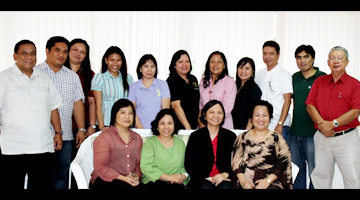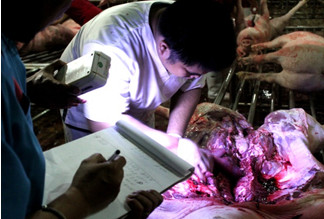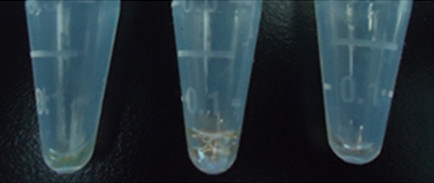 Project reviewers commended the swine respiratory project, “Improved investigation, diagnosis and technical support for the control of respiratory diseases of pigs in the Philippines and Australia (AH/2009/022)” for its first accomplishments in the first year of project implementation.
Project reviewers commended the swine respiratory project, “Improved investigation, diagnosis and technical support for the control of respiratory diseases of pigs in the Philippines and Australia (AH/2009/022)” for its first accomplishments in the first year of project implementation.
Dr. Jose Molina, a private veterinary consultant; Dr. Veronica Matawaran, professor of the College of Veterinary Medicine of the University of the Philippines Los Baños (CVM-UPLB); and, Dr. Lily Ann Lando, director of the Applied Communication Division of the Philippine Council for Agriculture, Aquatic and Natural Resources Research and Development (ACD-PCAARRD) composed the external reviewers.
Evaluated were the project’s accomplishments in veterinary field surveillance and diagnosis including the epidemiology study, development of laboratory diagnostic protocol, development of loop-mediated isothermal assay (LAMP) kits for Mycoplasma hyopneumoniae, Actinobacillus pleuropneumoniae, and Haemophilus parasuis; and on communication.
External evaluators described the project as “on the right track” with its efforts to improve swine respiratory disease investigation and diagnosis. The project’s approach to offer localized solutions to some of the long-standing challenges in the swine sector such as sustainable disease monitoring and efficient disease diagnosis are expected to significantly impact the industry.
The reviewers advised the researchers to consider value-adding to their activities and pursue the intellectual property potential of research outputs.
Furthermore, reviewers stressed the importance of instituting a post-project scheme or model for agencies that will adopt and implement project technologies and products given the project’s limited resources and duration.
According to Dr. Edwin Villar, director of PCAARRD’s Livestock Research Division (LRD) and national coordinator of the project, the annual review is part of the Council’s monitoring and evaluation. It aimed to assess the project’s progress by reviewing the work plan, expected outputs, and milestones promised. It also aimed to gain insights and recommendations from the reviewers on how to improve the implementation of each project component and thus ensure that project objectives are met.
The swine respiratory project is a collaboration of the Philippine and Australian governments. It is funded by the Australian Center for International Agricultural Research (ACIAR) and PCAARRD, and implemented in the Philippines by the researchers from the Bureau of Animal Industry, Regional Animal Disease Diagnostic Laboratory (RADDL) of the Department of Agriculture Regional Field Unit (DA-RFU) 3, and Central Luzon State University (CLSU).
 Closely working with the project are the provincial veterinary offices of Bulacan and Pampanga where the project is centrally focused. On the Australian side, the project has been commissioned by ACIAR to the University of Queensland.
Closely working with the project are the provincial veterinary offices of Bulacan and Pampanga where the project is centrally focused. On the Australian side, the project has been commissioned by ACIAR to the University of Queensland.
